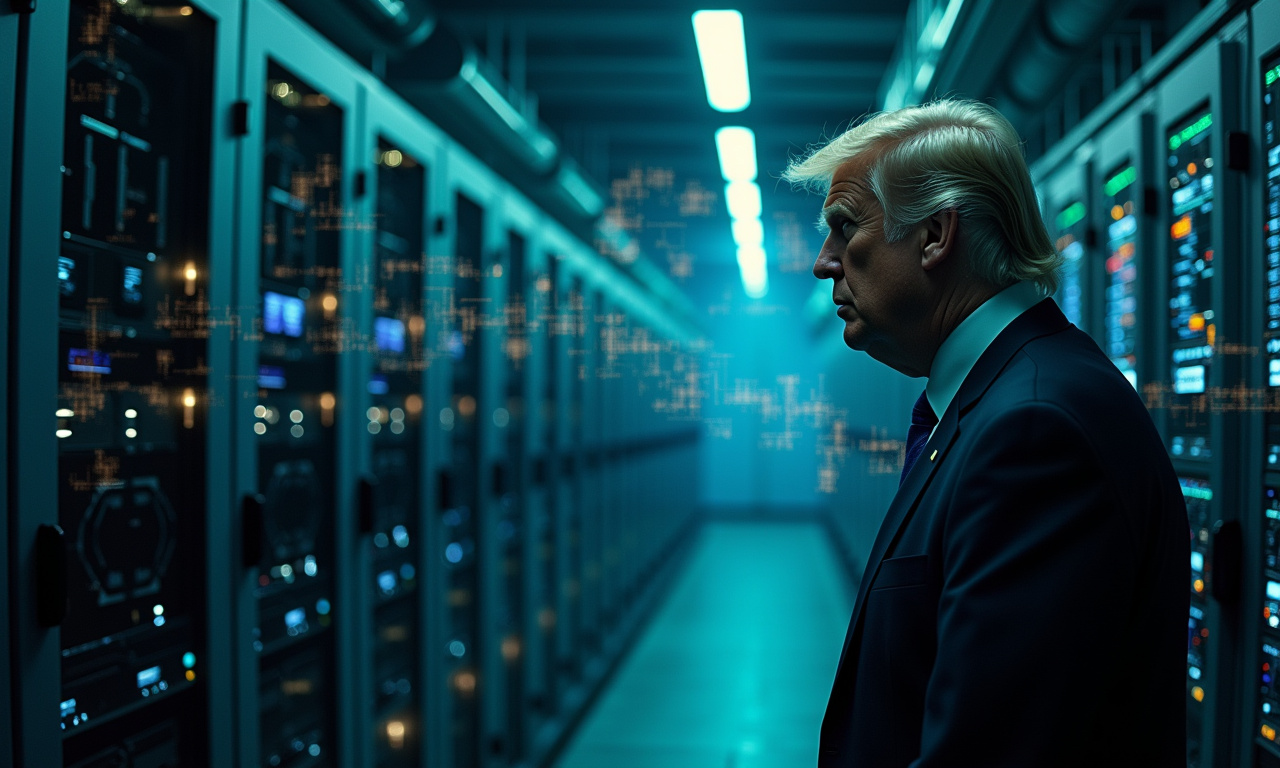Montana Bitcoin Boom: 3,200 Miners Power Up Amid Price Surge!

Hyperscale Data is re-starting its mining operations in Montana, bringing 3,200 new miners online to the Bitcoin network. It’s true bitcoin’s price is through the roof at the moment. This increase is driven by a confluence of political events and economic fears. This article will explore the strategic motivations behind Hyperscale Data's decision, the potential profitability and risks involved, and the broader implications for the Bitcoin network.
Strategic Reasons Behind the Restart
Several factors are converging to create a potentially favorable environment for Bitcoin mining, prompting Hyperscale Data to resume operations in Montana.
- Political Climate: The price of Bitcoin has jumped approximately 40% since the presidential election. This surge is partly attributed to promises from political figures to ease federal oversight of cryptocurrency and establish a strategic Bitcoin reserve. The establishment of a strategic bitcoin reserve would position the U.S. “as a leader among nations in government digital asset strategy.”
- Economic Uncertainty: Fears surrounding the bond market and potential U.S. credit downgrades are also contributing to Bitcoin's appeal as an alternative asset. Higher yields increase the cost of U.S. borrowing and add strain to the nation’s finances which leads to economic uncertainty. Bryan Armour suggests that the recent rise in the price of bitcoin is a mix of regulatory adoption and fear for the dollar given the expectation of high government spending.
- Technical Analysis and Market Sentiment: Bitcoin's rise to $110,000 has sparked FOMO, with retail traders fueling calls for even higher prices.
Profitability and Risks of Mid-Tier Miners
Deploying mid-tier miners does come with its challenges.
- Energy Costs: Montana's energy landscape is a key consideration. NorthWestern Energy anticipates serving up to 450 MW of power to data centers. For context, peak demand in 2023 was about 2,000 MW, with NorthWestern producing around 1,600 MW and owning 1,065 MW of production capacity.
- Profitability: The GDXJ top 25’s collective revenues surged 26.8% YoY to $9,519m. The GDXJ-top-25 average AISCs merely climbed 6.4% YoY to $1,378 while Q1’25’s average gold prices skyrocketed 38.3% YoY to $2,866. Over these last seven quarters in a row, GDXJ-top-25 implied unit profits have soared 34%, 106%, 133%, 63%, 66%, 71%, and 95% YoY.
- Competitive Landscape: While increased revenues and managed costs can improve profitability, the Bitcoin mining industry is highly competitive. The efficiency of the mining hardware and access to affordable energy are crucial for success.
Impact on Bitcoin Network
Hyperscale Data's move has implications for the Bitcoin network's hashrate and decentralization.
- Hashrate Increase: As of October 31, the Bitcoin hashrate is 517.70 EH/s, indicating a high level of computing power securing the network. The addition of 3,200 miners will contribute to this hashrate, further strengthening the network's security. The hashrate tells us how many guesses occur on the network per second, and a higher hashrate makes it more secure and resilient to potential attacks, such as a 51% attack.
- Decentralization: Decentralization is a crucial feature required to sustain the verification and recording of transactions in the Bitcoin system, and a large number of miners is essential for maintaining decentralization. A larger number of miners can lead to increased decentralization, as it becomes more difficult for a single entity to control the network.
- Miners and Decentralization Relationship: Studies suggest that if the two sources of miners' competitive advantage (operating costs and capital availability) are complements, the number of participating miners is negatively related to rewards, and the relationship is stronger when the capital availability for the minimum level of computing resource (i.e., block difficulty) is higher.
Hyperscale Data has resumed operations after initially halting mining in Montana. Much like the recent ICE decision, this decision comes from a close reading of the political, economic, and technological climate. Although the opportunity to be profitable is there, the company still would face the challenges of high energy costs and competition. This increased hashrate makes the Bitcoin network even more secure! Ultimately, what will dictate the impact on decentralization is how the larger mining industry evolves.

Lee Chia Jian
Blockchain Analyst
Lim Wei Jian blends collectivist-progressive values and interventionist economics with a Malaysian Chinese perspective, delivering meticulous, balanced blockchain analysis rooted in both careful planning and adaptive thinking. Passionate about crypto education and regional inclusion, he presents investigative, data-driven insights in a diplomatic tone, always seeking collaborative solutions. He’s an avid chess player and enjoys solving mechanical puzzles.


